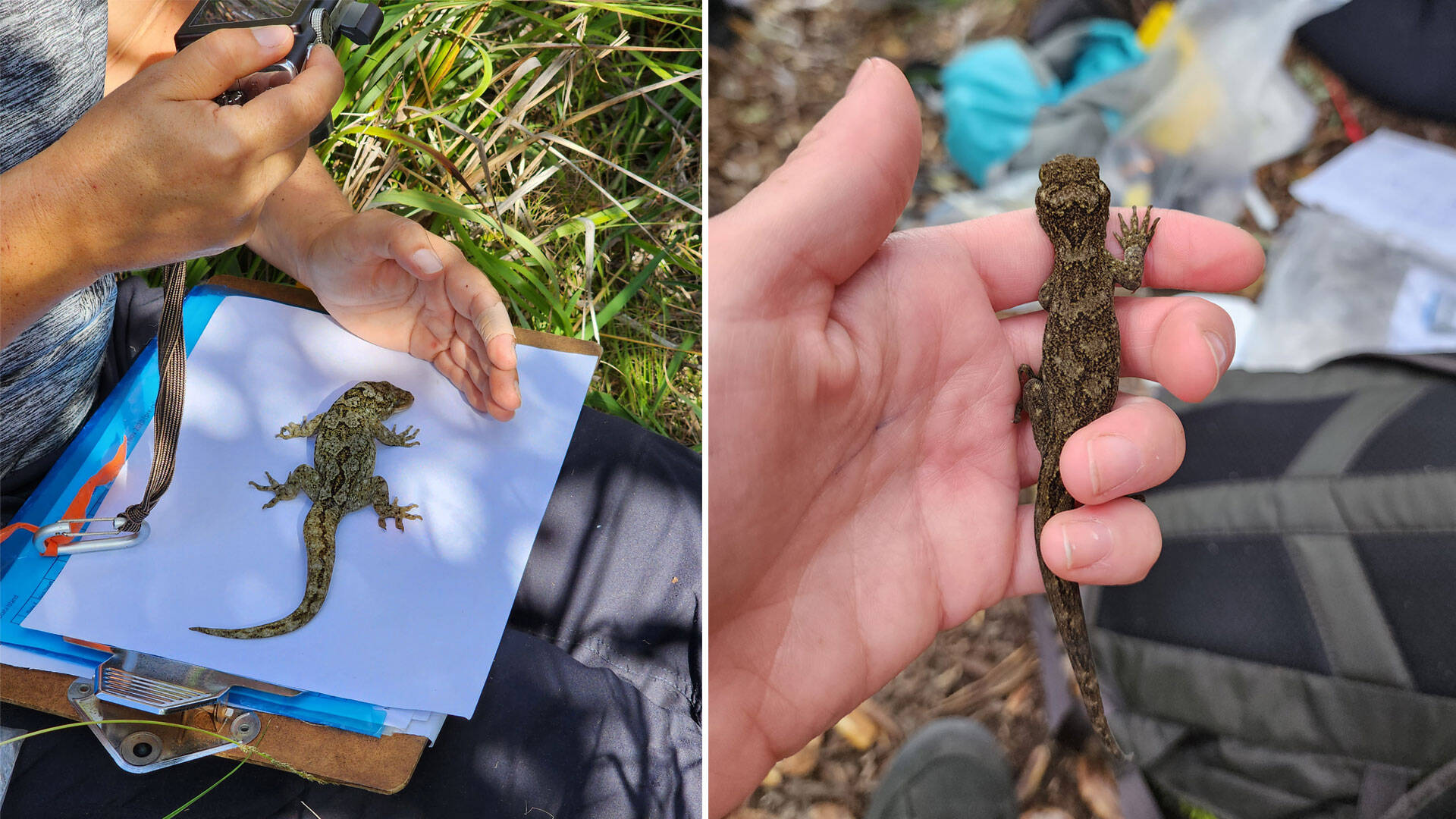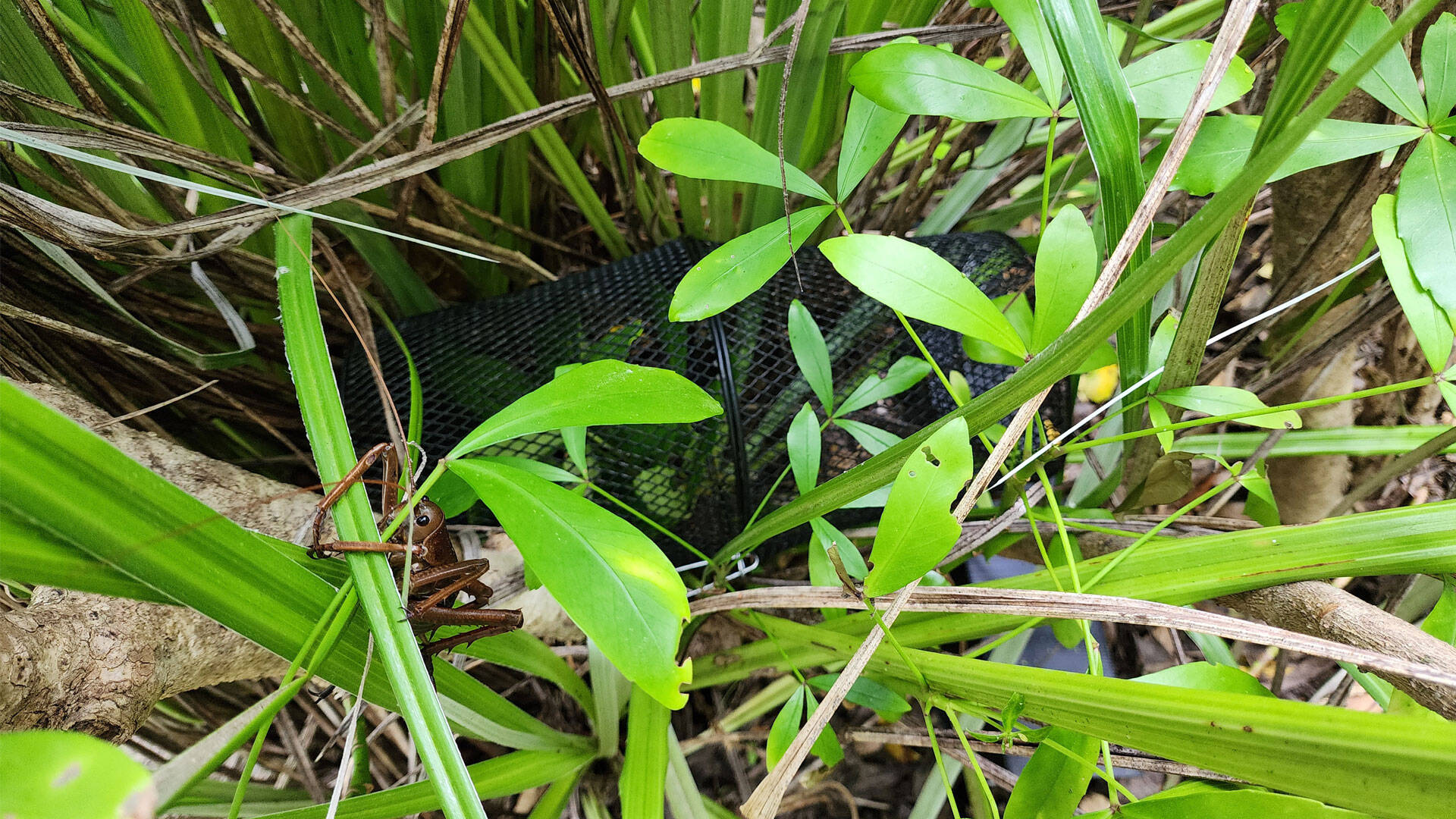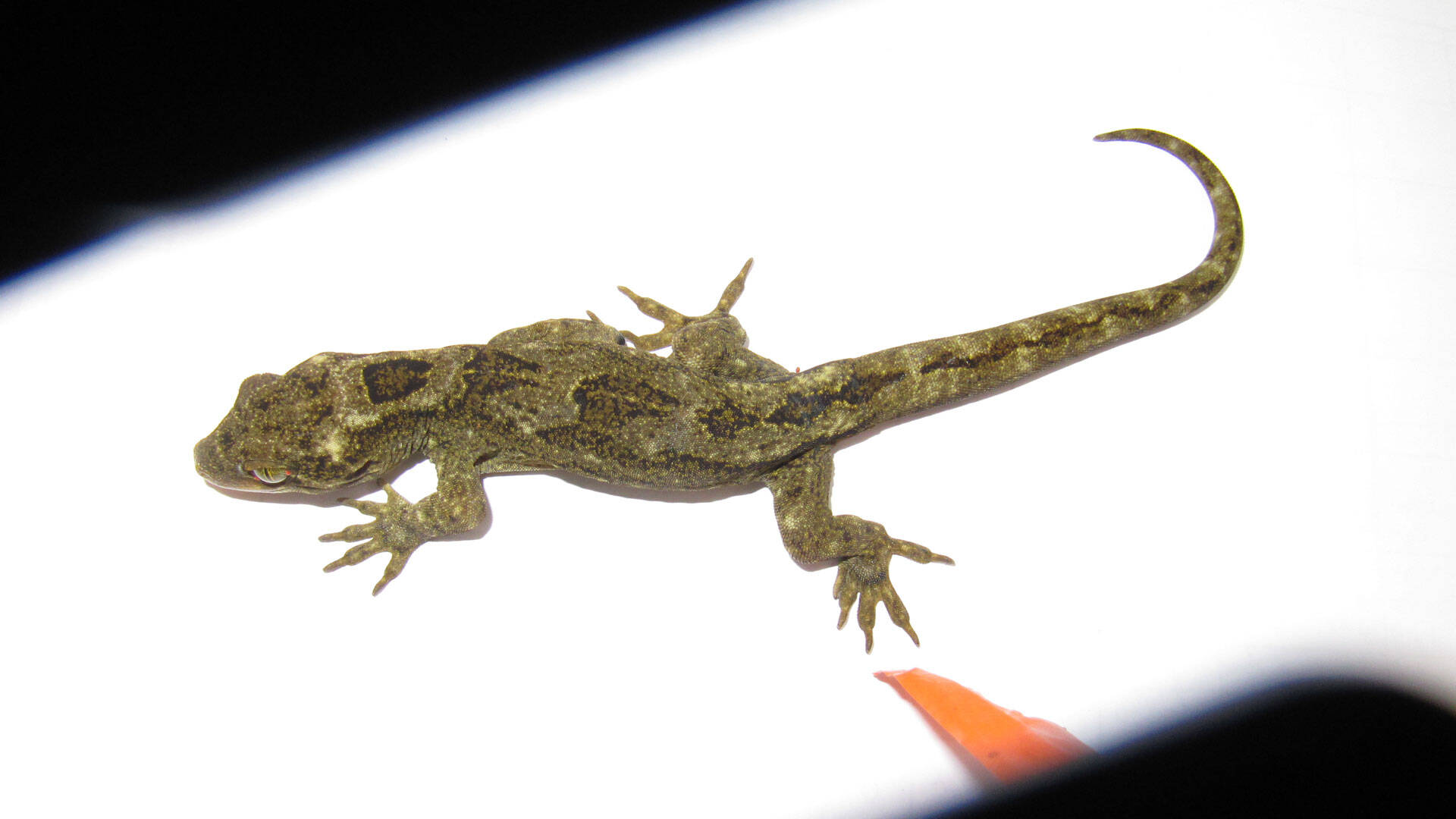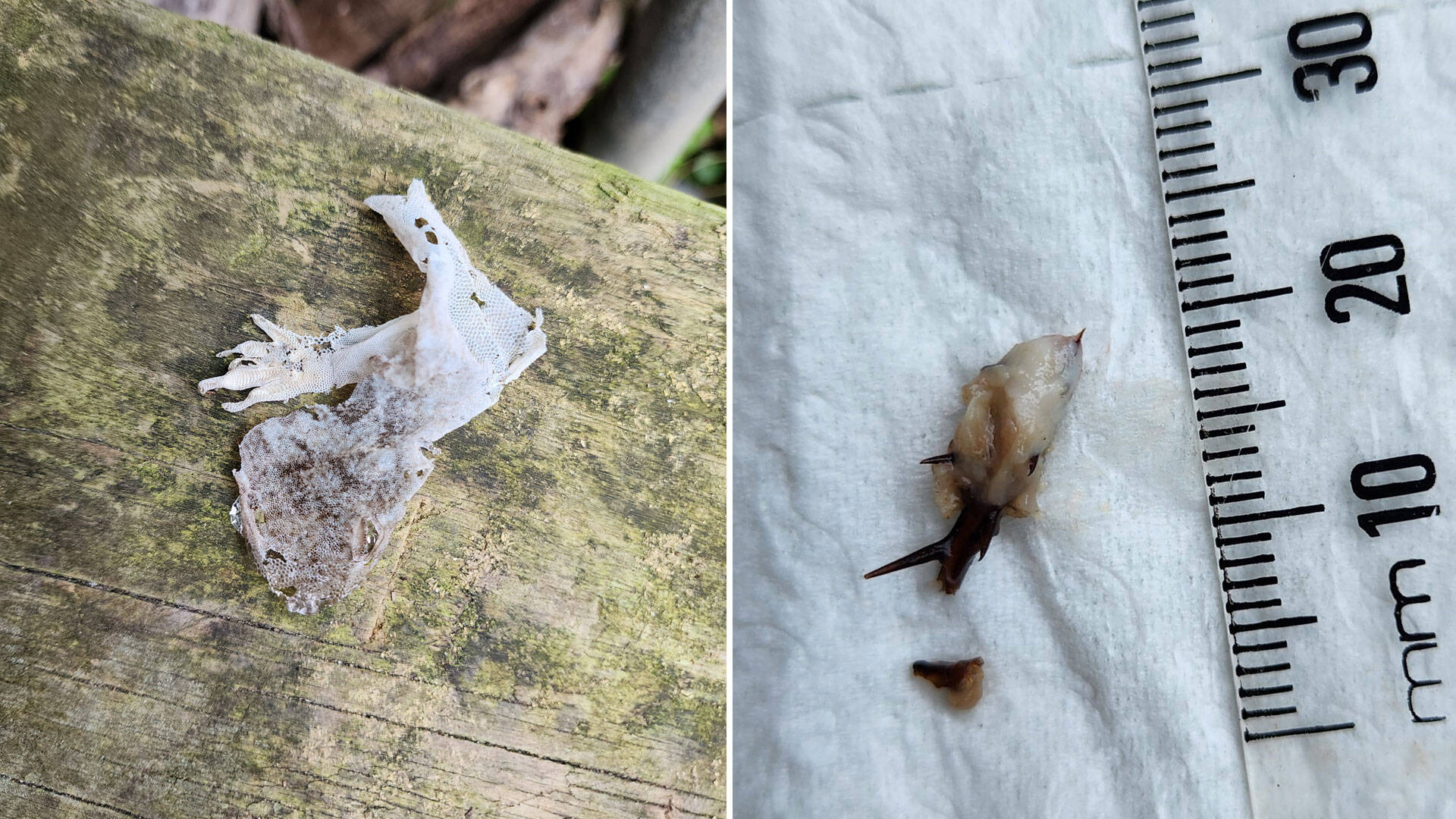Just this year, DNA sampling has revealed that what was previously thought of as one gecko has now been recategorised as two genetically distinct species – the Duvaucel’s gecko (Hoplodactylus duvaucelii) and te mokomoko a Tohu / the Tohu gecko (Hoplodactylus tohu).
The former was once widespread throughout New Zealand’s North Island, but introduced predators and habitat destruction have meant that naturally occurring populations are restricted to 36 offshore islands. The species has a conservation threat status of ‘at risk’ and it is estimated there are approximately 20,000 mature individuals. The Tohu gecko is in much more dire straits - with an estimated 600 individuals surviving in the wild today, and is found on Cook Strait's Ngāwhatu-kai-ponu/Brothers and Kuru Pongi/Trios Islands.
These nocturnal geckos are beautiful to behold, ranging from olive-brown to green tones reminiscent of bark or lichen, with individualised mottled patches of colour down their backs, and a pale grey underside. They inhabit lowland forests, flax lands and coastal areas and during the day like to hide out in tree hollows, under logs and stones, or within rock crevices and petrel burrows.
Auckland Zoo’s ectotherm keeper Chye-Mei has cared for Duvaucel’s geckos for many years throughout her zookeeping career, which has included assisting with disease screening for the species on Repanga/Cuvier and Kawhitu/Stanley Islands.









